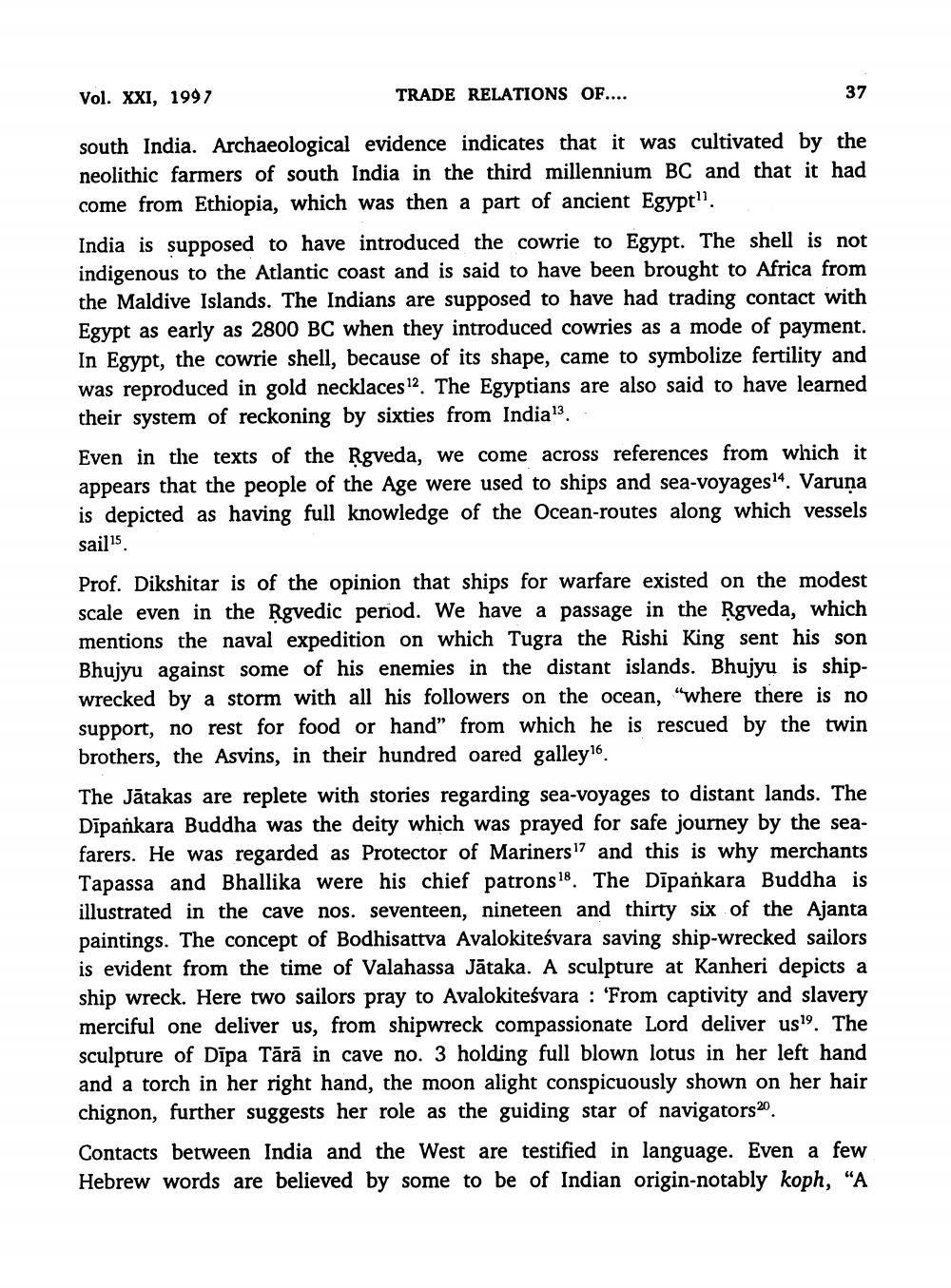________________
Vol. XXI, 1997
TRADE RELATIONS OF....
37
south India. Archaeological evidence indicates that it was cultivated by the neolithic farmers of south India in the third millennium BC and that it had come from Ethiopia, which was then a part of ancient Egypt".
India is supposed to have introduced the cowrie to Egypt. The shell is not indigenous to the Atlantic coast and is said to have been brought to Africa from the Maldive Islands. The Indians are supposed to have had trading contact with Egypt as early as 2800 BC when they introduced cowries as a mode of payment. In Egypt, the cowrie shell, because of its shape, came to symbolize fertility and was reproduced in gold necklaces 2. The Egyptians are also said to have learned their system of reckoning by sixties from India' Even in the texts of the Rgveda, we come across references from which it appears that the people of the Age were used to ships and sea-voyages14. Varuna is depicted as having full knowledge of the Ocean-routes along which vessels sail 15
Prof. Dikshitar is of the opinion that ships for warfare existed on the modest scale even in the Rgvedic period. We have a passage in the Rgveda, which mentions the naval expedition on which Tugra the Rishi King sent his son Bhujyu against some of his enemies in the distant islands. Bhujyu is shipwrecked by a storm with all his followers on the ocean, "where there is no support, no rest for food or hand” from which he is rescued by the twin brothers, the Asvins, in their hundred oared galley 16.
The Jātakas are replete with stories regarding sea-voyages to distant lands. The Dīpankara Buddha was the deity which was prayed for safe journey by the seafarers. He was regarded as Protector of Mariners 17 and this is why merchants Tapassa and Bhallika were his chief patrons 18. The Dīpankara Buddha is illustrated in the cave nos. seventeen, nineteen and thirty six of the Ajanta paintings. The concept of Bodhisattva Avalokiteśvara saving ship-wrecked sailors is evident from the time of Valahassa Jātaka. A sculpture at Kanheri depicts a ship wreck. Here two sailors pray to Avalokitesvara : 'From captivity and slavery merciful one deliver us, from shipwreck compassionate Lord deliver us. The sculpture of Dīpa Tārā in cave no. 3 holding full blown lotus in her left hand and a torch in her right hand, the moon alight conspicuously shown on her hair chignon, further suggests her role as the guiding star of navigators20. Contacts between India and the West are testified in language. Even a few Hebrew words are believed by some to be of Indian origin-notably koph, "A




